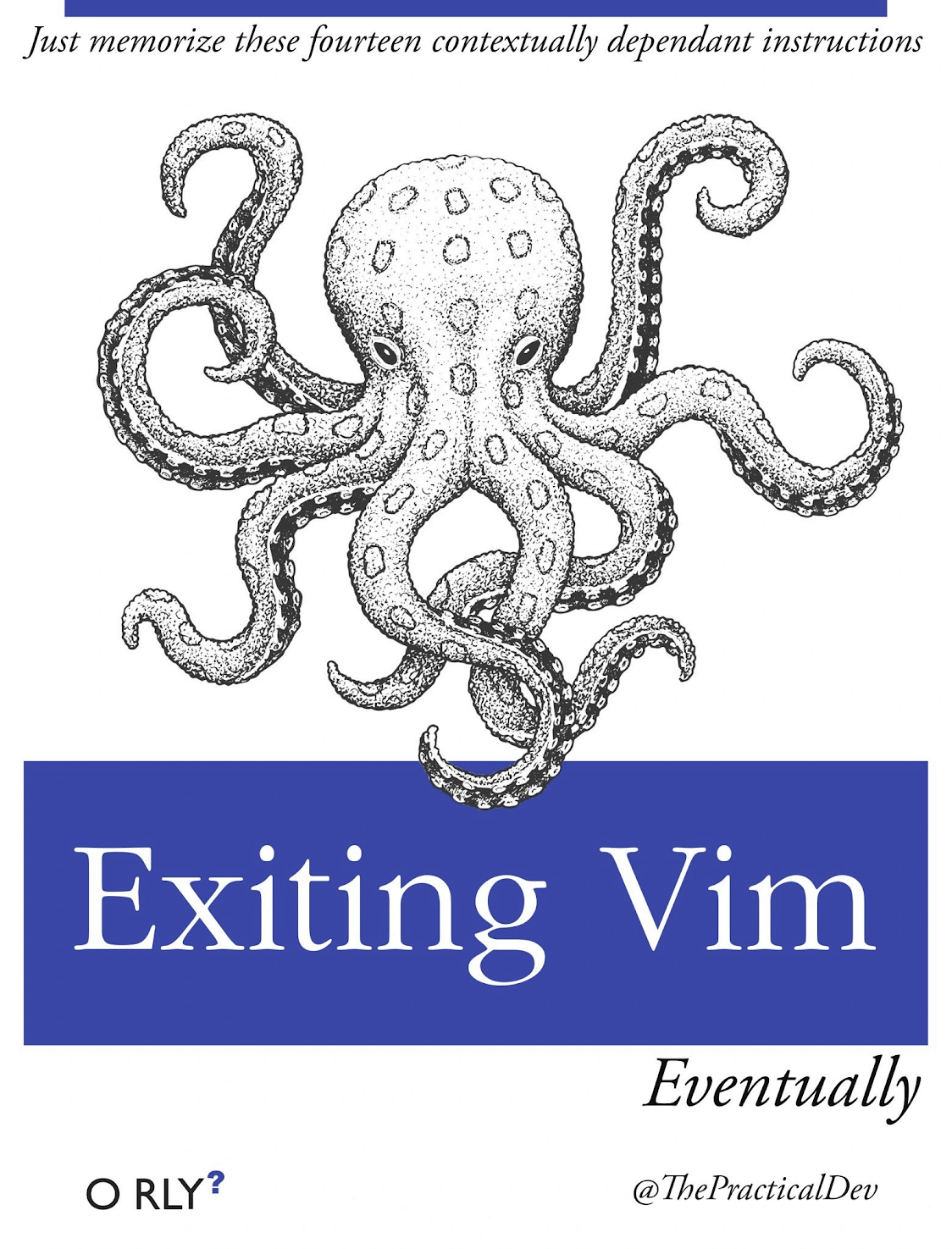I start: the most important thing is not the desktop, it’s the package manager.
That I shouldn’t care as much about installed packages I no longer use. Sure, going through installed programs and cleaning up from time to time is ok, but no need to panic if something sticks around.
Especially when I installed something manually needing dependencies for programming, I tend to write down names of installed packages and then managing it manually, because I wasn’t yet aware what their names mean. Now using same OS for over a year, heavly testing stuff, having multiple desktop enviroments and not cleaning it up my system partition is taking less than 30GB, compared to 1TB disk it’s nothing.
I remember, back in the day, I asked on IRC how to edit a file in Linux. Someone said vi. Little did I know that in chat someone said, the next question is how do I quit. I asked that exact question. Yes chat erupted.
Awesome! And it’ll be segregated from the base system and from other containers, like toolbox installs are?
You are quite the cocky jerk for not getting software to run that complete noobs are using on their Steam Deck. I’d be more ashamed than anything in your shoes.
That after getting used to Linux I will hate to be forced to use less free operating systems.
This so much. I absolutely cannot stand Windows anymore.
I could but I always get a feeling like I’m being monitored constantly. Like imagine being at work and if you don’t move your mouse for a few minutes you’d get a warning or something. Or remember using a computer at school where the teacher could literally see the screen of every student, yeah like that.
Once you go FOSS, you never go back.
I learned to never settle. If you don’t like the default workflow of Gnome, try some extensions, or even a different DE. Same with Package Managers. If you don’t like the syntax, make an alias. Don’t just “deal with it”. Windows has brainwashed people into thinking that there is only one way to do a thing.
Its why I always find it funny when people complain about changes to the start bar, because surely there isnt a bunch of 3rd party options in existance that change it, and can mimic 7’s start bar.
I have heard that shell replacements are often very buggy on Windows.
See I’ve run into an issue now where I like and am used to GNOME, but I also want to try a tiling WM and doesn’t seem like there’s really a good way to do that in gnome
You can install the tiling WM and try it seperately. Might even be possible to combine them too, but that might get pretty involved and hacky since Gnome doesn’t like it when you stray from “the path” that they deem correct.
I’d probably just do one or the other, don’t want to be using nonstandard stuff within my non-standard stuff
This is kinda funny to me because I hadn’t realized how terrible the Windows workflow was for me until Gnome 3 came out.
Ever since, while I’ll use extensions for stuff like alphabetical app grid and Caffeine, I never do anything that changes the Gnome workflow. It’s not for everyone, but it absolutely is for me.
How to quit vim.
Just read this book:

Used to use gedit, the found nano and it was awesome. Then found Vim… I RAN back to nano haha
Try micro.
It’s much better and quite easy if not easier to use than nano. It should really be the default simple editor.
This looks cool! Thanks!
I hear you 😁. For whatever reason I stuck with the Vim tutorial and did it a few times over the years. Now I’m using the IdeaVIM extension in IntelliJ - that mode system is just sooi powerful. It has a horrible learning curve, yes, but if you manage to stick with it, it pays huge dividends. I probably know, like, 18% of all commands, and it completely changed how I edit files (mostly for coding, but also text).
Alright alright. You win haha seriously, you’ve convinced me to give vim another chance.
Use vimtutor. It comes with vim and teaches you to the basic vim commands from within vim.
And don’t worry about exiting vim, that’s lesson 1.2 :)
Hahaha!!! I actually know how to exit Vim. Had to learn it when setting up a server config on a server that only had Vim installed. Once set up, nano got installed.
This vimtutor looks pretty awesome, and I can’t wait to get learning on it. In all honesty, vim does looks super helpful. It’s just that I usually use text editors to quickly setup configs, when gui won’t do or I’m just done with gui for the moment. During those times, my patience is usually low, and searching how to save or quit or open or do any other basic functionality, reduces that patience further. But vimtutor makes it a point to learn vim when I’m not trying to get in, get it done, and get out. This may work for me. I may actually learn vim!
I vaguely remember pressing Alt+F4 while trying to close vim in a terminal once. It did switch to me login prompt so I thought it worked.
That I could put /home on a different drive
That I would never boot into Windows again so having partitions for it was a waste of time
That mounting drives with their uuid as the mount location is insaneThat mounting drives with their uuid as the mount location is insane
Why tho? Kernel sometimes can index drives in different order (if you have multiple drives), screwing your mount locations. But UUID is always the same
It’s just really long is all. I wish I had given it something shorter but descriptive.
Linux is pretty easy to use nowadays. The only thing I would check before switching is driver compatibility.
It was ~20 years ago so my advice to myself then would be pretty irrelevant now. I messed up my laptop, and my advice then would have been don’t start with a laptop (because laptop compatibility was lacking back then compared to desktop, different times).
Laptop compatibility still sucks at times, especially with weird configurations of amd apu and nvidia gpu laptops… or maybe it’s just my skill issue.
NVIDIA’s contempt for the Linux community is legendary. Definitely not a skill issue.
“20 years from now, people are still discussing moving to Linux!”
People who wanted Linux on the desktop to be so user-friendly their grandma could use it are now grandparents.
And 20 more years there will still be people switching
There will be dozens more people switching. Dozens!
Distrobox exists, so one is not bound to use a specific distro just because it packages some of the apps/binaries they require.
Installed distrobox on NixOS because I was worried being limited to only nixpkgs and have not touched it once lol
Same goes for the windows VM except for the time I needed to run excel macros for work
Worried about being limited to only the biggest selection of packages available. Does not compute.
I’d never heard of nixpkgs before so thought it was some small niche thing
Thats been a fear of mine moving to nixos. Glad to know it’ll cover most of my software needs.
Here’s a graph, it should be fine for your package needs: Graph
This is not totally accurate because nixpkgs also packages some packages that wouldn’t be in the system package manager like Python and Haskell packages. Excluding those it’s pretty much the same as the AUR
Am I reading the readme correctly in that I can run apt-get within distrobox on Fedora, and not be limited to dnf packages?
You can install Distrobox on Fedora (or any of the distros that support it), create a Debian distrobox on your Fedora install, and within the Debian distrobox you can use
apt-getto install whichever Debian package you like. Or…, you could make an Arch distrobox and even install stuff from the AUR. Or really any package from any of your favorite distros as long as it’s supported.Yes!
So enjoying immutable fedora with AUR support. Cannot be overstated…
deleted by creator
The 1:1 windows:Linux replacement is just a means to keep you on Windows. Once you learn Linux, you’ll come to understand how much of a farce it is and how it’s designed to keep you away
Linux is a farce and designed to keep you away? Could you elaborate?
No, i think he means the idea that Linux is supposed to substitute Windows 1:1
Unmounting removable drives after writing to then is crucially more important than on Windows
How so?
On Windows, I often simply took out the USB drive without “safely removing” it. The data was there 99% of the time. On Linux, if I’m not mistaken, unmounting the drive before disconnecting is what actually writes data to it.
That can be configured with the
syncoption ofmount.Really? I’ve literally never done this but I suppose I really only use my USB for dd’ing a distro.
Removed by mod
It’s pretty important on Windows too, though. Always “eject” or “safely remove hardware” before unplugging!
Not in Windows 10/11. You can still “eject” if it makes you feel better, but it’s basically redundant. They reworked the support for removable media so they are always ready to remove except during active read/write operations.
Read/write operations can happen in the background at any moment as long as the drive is mounted, so that’s not terribly comforting.
Anyway, Linux has a mount option,
sync, to do the same thing that Windows does with removable media. Dunno if any desktop environments actually use it, but they could.Besides being slower, though, it has the downside of causing more write operations (since they can’t be batched together into fewer, larger writes), so flash drives will wear out faster. I imagine Windows’ default behavior has the same problem, although with Windows users accustomed to pulling out their drives without unmounting, I suppose that’s the lesser of two evils.
Rasberry Pi or other NUC is a great way to begin.
By the time you’ve dressed out an Rpi to be halfway usable, you’ve spent about as much as a decent NUC. And all you have to show for it is a slow-as-mud sd card, hardly any video acceleration, a USB stack that only crashes sometimes, a busy OOM killer, and no software.
Get an N95 based nuc. A Beelink with 8/256 runs about $150, and it just works. (Well, you might need pcie_aspm=off).
yeah, RPI is just ‘cookbooked’ due to fixed hw













